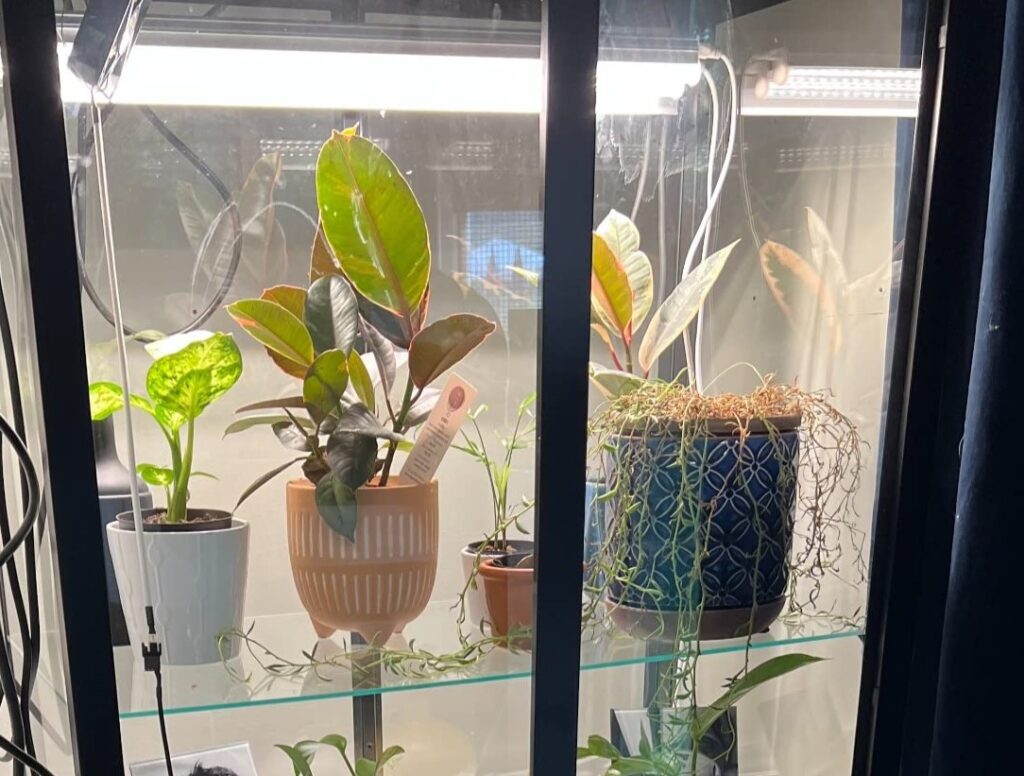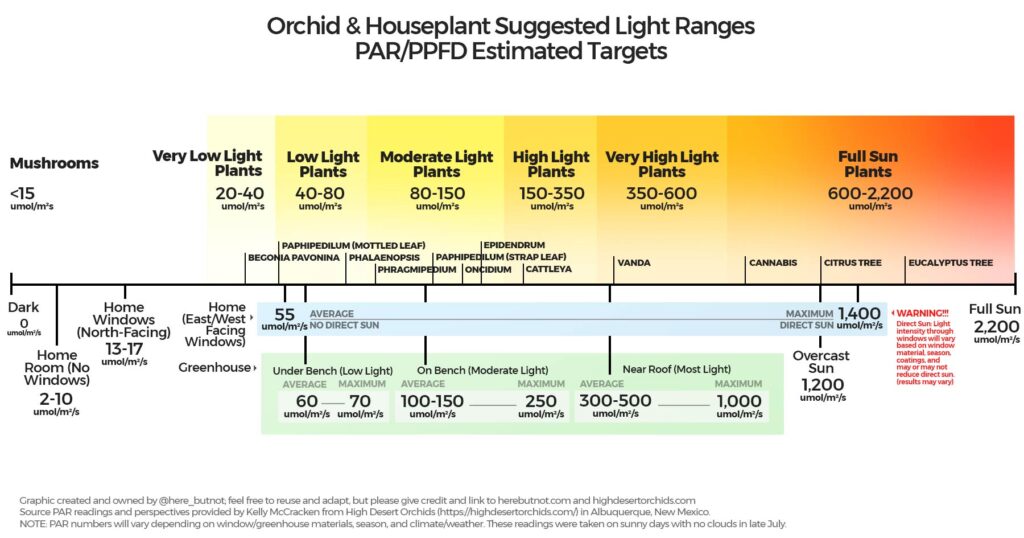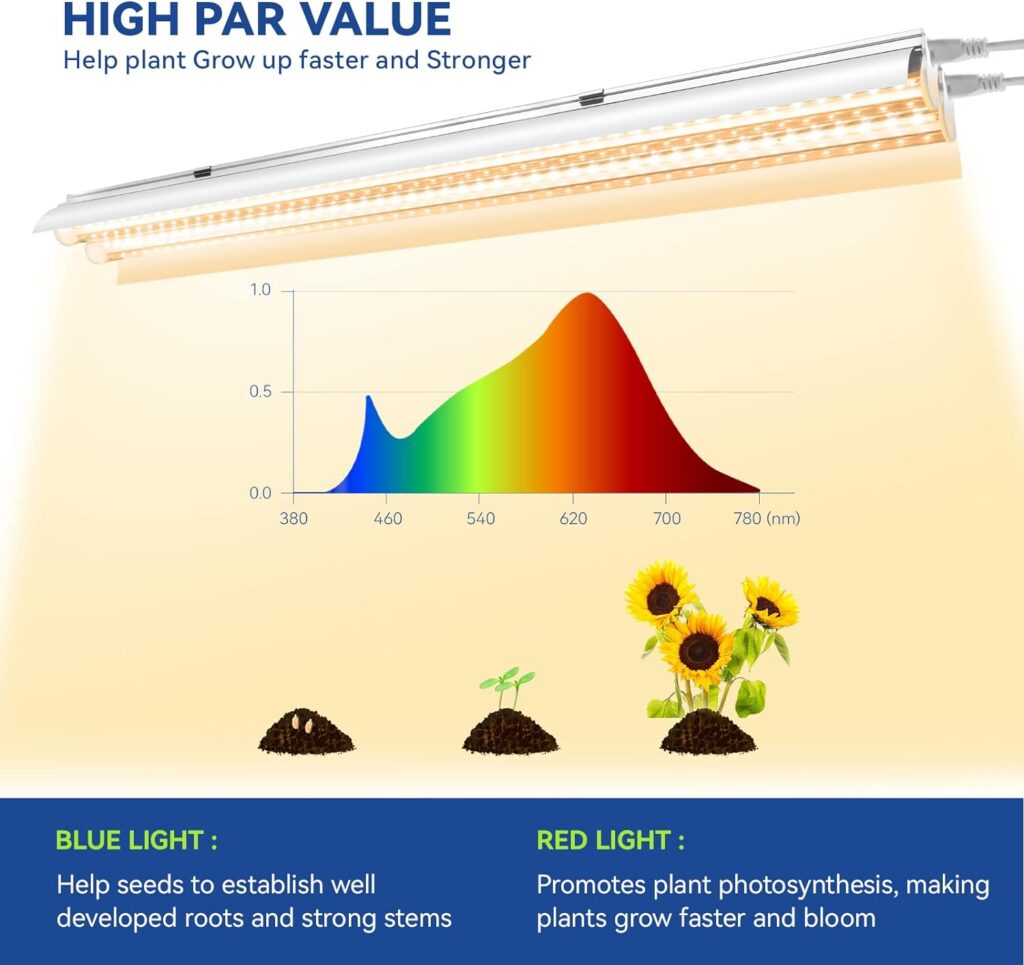IKEA cabinets like Milsbo, Fabrikor, and Detolf are all the rage for plant lovers turning them into mini-greenhouses. And what’s the next step?
Heading to Amazon to find the perfect grow light, of course!
The big question is: Monios T8 or Barrina T5, which one’s for you?
As these cabinets gain popularity, we’re all wondering: which Amazon grow light is the best fit?
Most of us, myself included, have either gone for Monios or Barrina. Why? They’re the most talked-about and bought lights on Amazon. Plus, their 2-foot size fits these cabinets like a glove.
But let’s talk about performance. Barrina lights give off a pinkish hue, while Monios leans yellow. Some folks in the Facebook group even mentioned leaf burn issues with Monios T8, switching to Barrina T5 as a result.
I use Monios T8 and have noticed similar effects on my Philodendron Birkin.
So, let’s dive into the nitty-gritty and compare Monios T5, T8, and Barrina T5, T8.

Understanding Light Metrics
Before we get into the details, let’s decode some light lingo.
- Photon: Simply, a tiny speck of light.
- PAR (Photosynthetic Active Radiation): The light range between 400 to 700 nm that’s vital for plant growth.
- PPFD (Photosynthetic Photon Flux Density): This tells us how much of that good light actually reaches your plant. Think of it as the “rainfall” of photons on your plant.
In simpler terms, imagine your grow light showering your plants with tiny light specks. PPFD counts how many of these light specks hit your plants.
Forget about other metrics like lux; they’re not that useful for us. Lux only tells you how bright the light is, not how useful it is for your plants.
Most app-based light meters measure in lux, but what you really want is the PPFD chart for your specific light. A high PPFD is a win-win; it means the light is energy-efficient and great for your plants.
So, when shopping for grow lights, always check the PPFD chart. It’s the best way to know if you’re getting a good deal for your green pals.
Monios vs. Barrina Grow Lights
So, we’ve got four popular lights that IKEA cabinet fans love: Barrina T5, T8 and Monios T5, T8.
Why? They’re the perfect size and easy on the wallet.
Let’s dive into their PPFD measurements, shown in units of umols/m^2s.
Remember, PPFD isn’t just one number; it varies depending on the distance from the light.
Most brands offer a 3-tier PPFD chart, and the best ones give you a full grid. For this comparison, we’re using measurements at 8″, 12″, and 20″.
| Light | 8″ | 12″ | 20″ |
|---|---|---|---|
| Barrina T5 | 91.1 | 59.3 | 31.2 |
| Barrina T8 | 210.7 | 132 | 69 |
| Monios T5 | 260 | 203 | 109 |
| Monios T8 | 181 | 136 | 83 |
What Does It All Mean?
The chart confirms our observations. Monios T8 lights are more potent than Barrina T5.
Strength Ranking:
- Barrina 2′ T5 (Weakest)
- Monios 2′ T8
- Barrina 2′ T8
- Monios 2′ T5 (Strongest)
Should you swap your Monios T8 for Barrina T5?
Not so fast. It depends on your plants and cabinet setup.

Plant Light Needs
Let’s get to the green stuff—your plants. Different plants have different PPFD needs:
- Low-Light Plants: 40-80 PPFD (e.g., African Violets, Tropical Begonias)
- Moderate-Light Plants: 80-150 PPFD (e.g., Pothos, Anthuriums)
- High-Light Plants: 150-350 PPFD (e.g., Philodendrons, Monsteras, Tropical Succulents)
- Very-High-Light Plants: 350-600 PPFD (e.g., Vanda Orchids, Citrus)
- Full-Sun Plants: 600-2200 PPFD (e.g., Fruiting Trees, Lemon Trees, Desert Cacti)
For instance, if you’ve got a philodendron needing 150 PPFD and it’s 8 inches under a Monios T8 light with 181 PPFD, expect leaf burn. But move it 12 inches away, and you’re golden.
Those saying their Monios T8s work fine likely have cabinets set up to keep sensitive plants farther from the light or are growing light-loving plants like Hoyas.
Double Lights, Double Trouble?
If you’re thinking of mounting two lights on one shelf, the math isn’t straightforward.
It’s not just adding PPFD values from two lights.
Unfortunately, neither manufacturer provides grid PPFD data to help us out. But from my experience, two Monios T8s on a shelf make my Hoyas very happy—lots of light, no burn.

Understanding Color Spectrum in Grow Lights
The Blue-Red-Infrared Trio
The color spectrum of your grow light is a game-changer for plant growth.
- Blue light encourages leaf expansion but can make plants leggy if overdone.
- Red light boosts vigorous growth and helps with flowering and fruiting.
- The latest buzz is about the infrared spectrum (or far red), which, when combined with blue and red, significantly enhances photosynthesis. Jeff Young’s grow lights for orchid hobbyists are a prime example.
With a PPFD of around 67, even lower than Barrina T5, these lights are fantastic when used in pairs. I have two sets, and they’re simply amazing.
Why was Barrina’s PPFD info so elusive?
Most people buying grow lights aren’t houseplant enthusiasts; they’re after high PPFD for seedlings or cannabis. Barrina T5’s PPFD is actually quite low for such purposes. Its energy efficiency—photon output per watt—isn’t great.
From my research, that’s a red flag for a subpar light.
So, if you own a Barrina T5, you might be paying more in electricity for the light you get. But in a small, confined space, the lower PPFD could be a blessing in disguise.
Trust but Verify
Remember, the PPFD ratings we’re discussing are from the manufacturers. When it comes to grow lights, trust is earned, not given.
While brands like Mars Hydro and Spider Farm have a good reputation, Barrina and Monios aren’t in that league. So, take their PPFD numbers with a grain of salt; they’re likely lower than stated.
So, there you have it. Your ideal grow light depends not just on PPFD but also on its color spectrum and your specific needs.
Keep these factors in mind, and you’ll create the perfect environment for your leafy friends.

